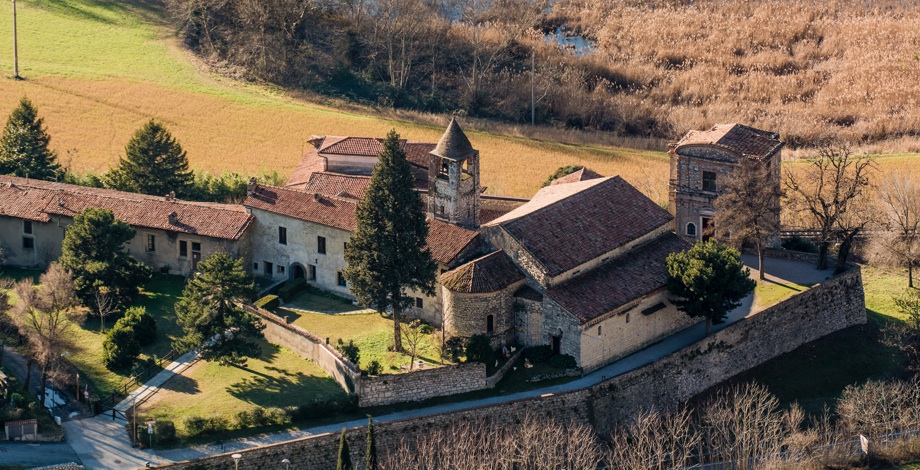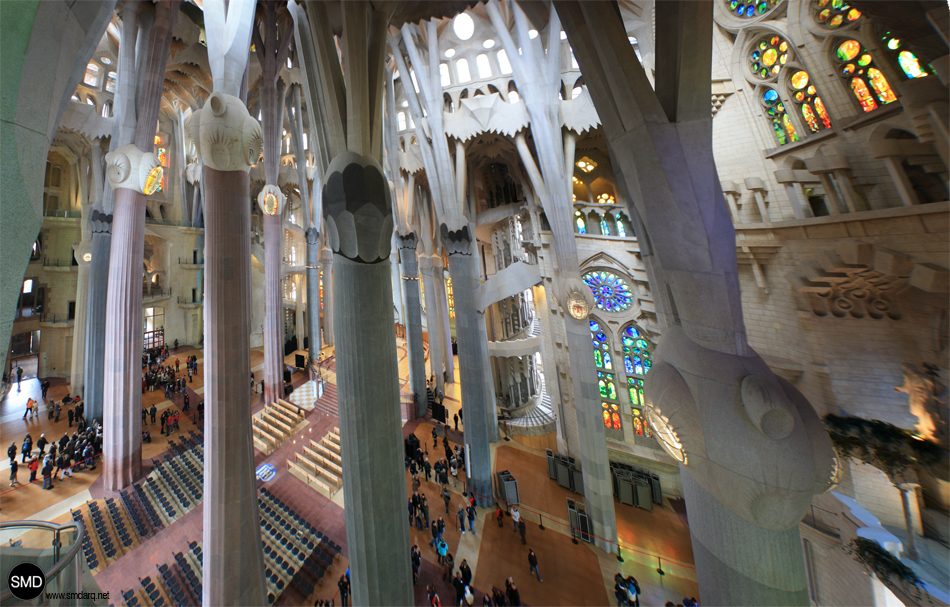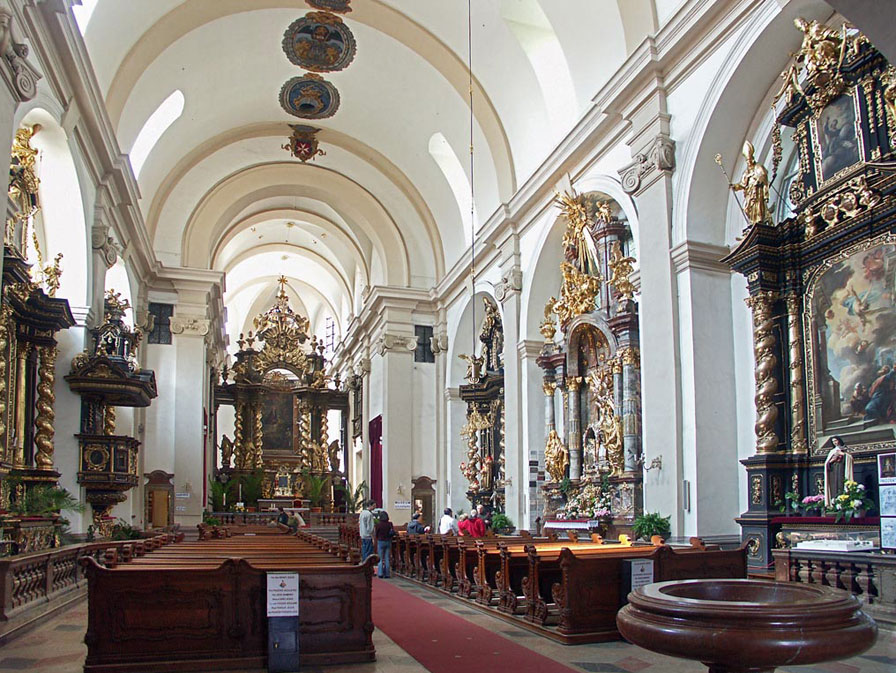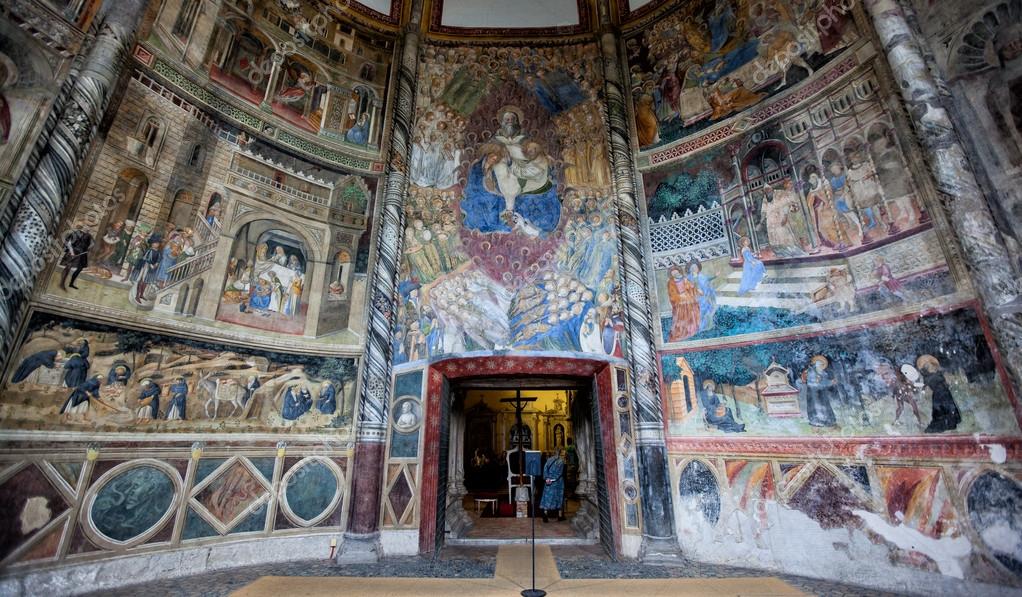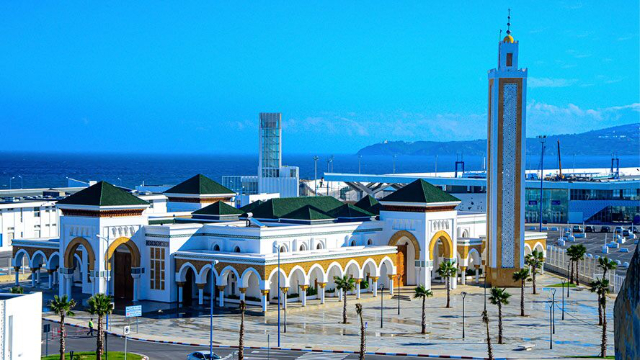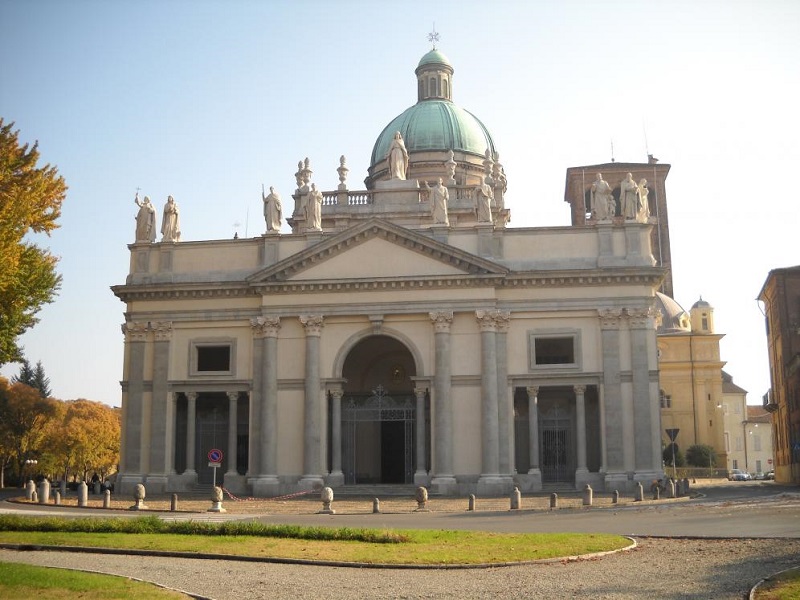‘former convent is located near Provaglio d’Iseo, close to the state road leading to the lake. The building, from its high position overlooks the "blades" of the Torbiere from which precisely, it derives its name. It is a small complex of religious and civic buildings placed over a hump guarding the area,once a marsh, from which the term lamosa comes;
The beautiful Romanesque church is in an elevated and dominant position to the west of the village on the expanse of the peat bogs, which have always been called "lame," which explains why it is called "in Lamosa." It was two brothers, Ambrose and Oprando, of Lombard nation, as they declared, who donated in December 1083 to the Benedictine monastery of Cluny a small church with all the goods with which they endowed it for the suffrage of their souls.
Twelve years later a monastery had already sprung up contiguously, which became a Cluniac priory in 1147. The original little church had already been enlarged. This is attested by the various exterior walls. A Romanesque side aisle had been added next to the primitive 11th-century apsidiole. New extensions were made in the 13th century in the part that is now framed in terracotta, and more in the 16th century with the elevation of the central apse and the last chapel. A plaque in Latin recalls the passage, in 1536, of the church to the Canons Regular of San Salvatore who officiated at San Giovanni in Brescia. Today the religious complex consists of the nave, the north side aisle with four chapels, and the bell tower. To the south of the church opens the cloister. The nave ends with an apse choir flanked by two Baroque altars set in two apsidioles. The pillars and walls are partially covered with frescoes in good condition. In the 1960s and 1970s of our century the complex suffered severe damage not only from the weather but also from vandalism. In 1983 the old church and the chapel in front of it were donated to the parish. After the roof was restored, the association "Friends of St. Peter’s" was formed, which has already committed itself to restoring and enhancing the monastery. Recent restorations would showcase wooden works by Fantoni.
